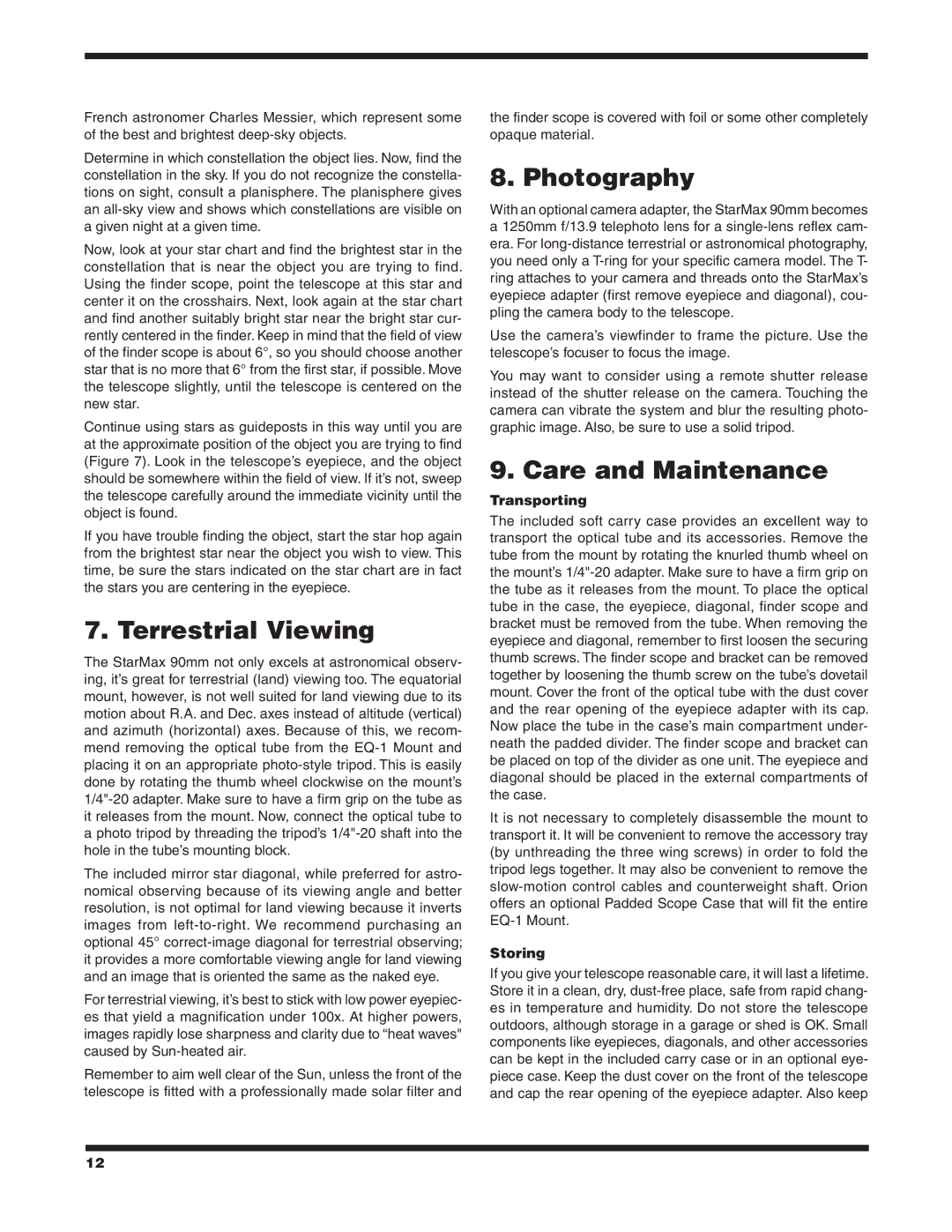
French astronomer Charles Messier, which represent some of the best and brightest
Determine in which constellation the object lies. Now, find the constellation in the sky. If you do not recognize the constella‑ tions on sight, consult a planisphere. The planisphere gives an
Now, look at your star chart and find the brightest star in the constellation that is near the object you are trying to find. Using the finder scope, point the telescope at this star and center it on the crosshairs. Next, look again at the star chart and find another suitably bright star near the bright star cur‑ rently centered in the finder. Keep in mind that the field of view of the finder scope is about 6°, so you should choose another star that is no more that 6° from the first star, if possible. Move the telescope slightly, until the telescope is centered on the new star.
Continue using stars as guideposts in this way until you are at the approximate position of the object you are trying to find (Figure 7). Look in the telescope’s eyepiece, and the object should be somewhere within the field of view. If it’s not, sweep the telescope carefully around the immediate vicinity until the object is found.
If you have trouble finding the object, start the star hop again from the brightest star near the object you wish to view. This time, be sure the stars indicated on the star chart are in fact the stars you are centering in the eyepiece.
7. Terrestrial Viewing
The StarMax 90mm not only excels at astronomical observ‑ ing, it’s great for terrestrial (land) viewing too. The equatorial mount, however, is not well suited for land viewing due to its motion about R.A. and Dec. axes instead of altitude (vertical) and azimuth (horizontal) axes. Because of this, we recom‑ mend removing the optical tube from the
The included mirror star diagonal, while preferred for astro‑ nomical observing because of its viewing angle and better resolution, is not optimal for land viewing because it inverts images from
For terrestrial viewing, it’s best to stick with low power eyepiec‑ es that yield a magnification under 100x. At higher powers, images rapidly lose sharpness and clarity due to “heat waves" caused by
Remember to aim well clear of the Sun, unless the front of the telescope is fitted with a professionally made solar filter and
the finder scope is covered with foil or some other completely opaque material.
8. Photography
With an optional camera adapter, the StarMax 90mm becomes
a1250mm f/13.9 telephoto lens for a
Use the camera’s viewfinder to frame the picture. Use the telescope’s focuser to focus the image.
You may want to consider using a remote shutter release instead of the shutter release on the camera. Touching the camera can vibrate the system and blur the resulting photo‑ graphic image. Also, be sure to use a solid tripod.
9. Care and Maintenance
Transporting
The included soft carry case provides an excellent way to transport the optical tube and its accessories. Remove the tube from the mount by rotating the knurled thumb wheel on the mount’s
It is not necessary to completely disassemble the mount to transport it. It will be convenient to remove the accessory tray (by unthreading the three wing screws) in order to fold the tripod legs together. It may also be convenient to remove the
Storing
If you give your telescope reasonable care, it will last a lifetime. Store it in a clean, dry,
12
